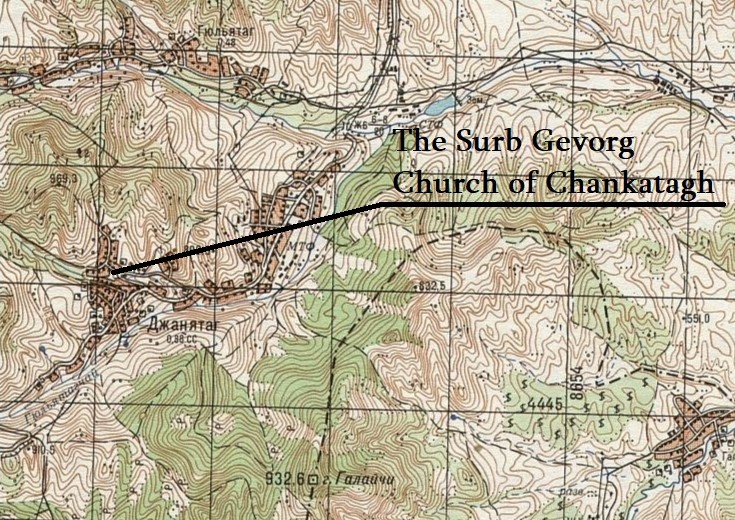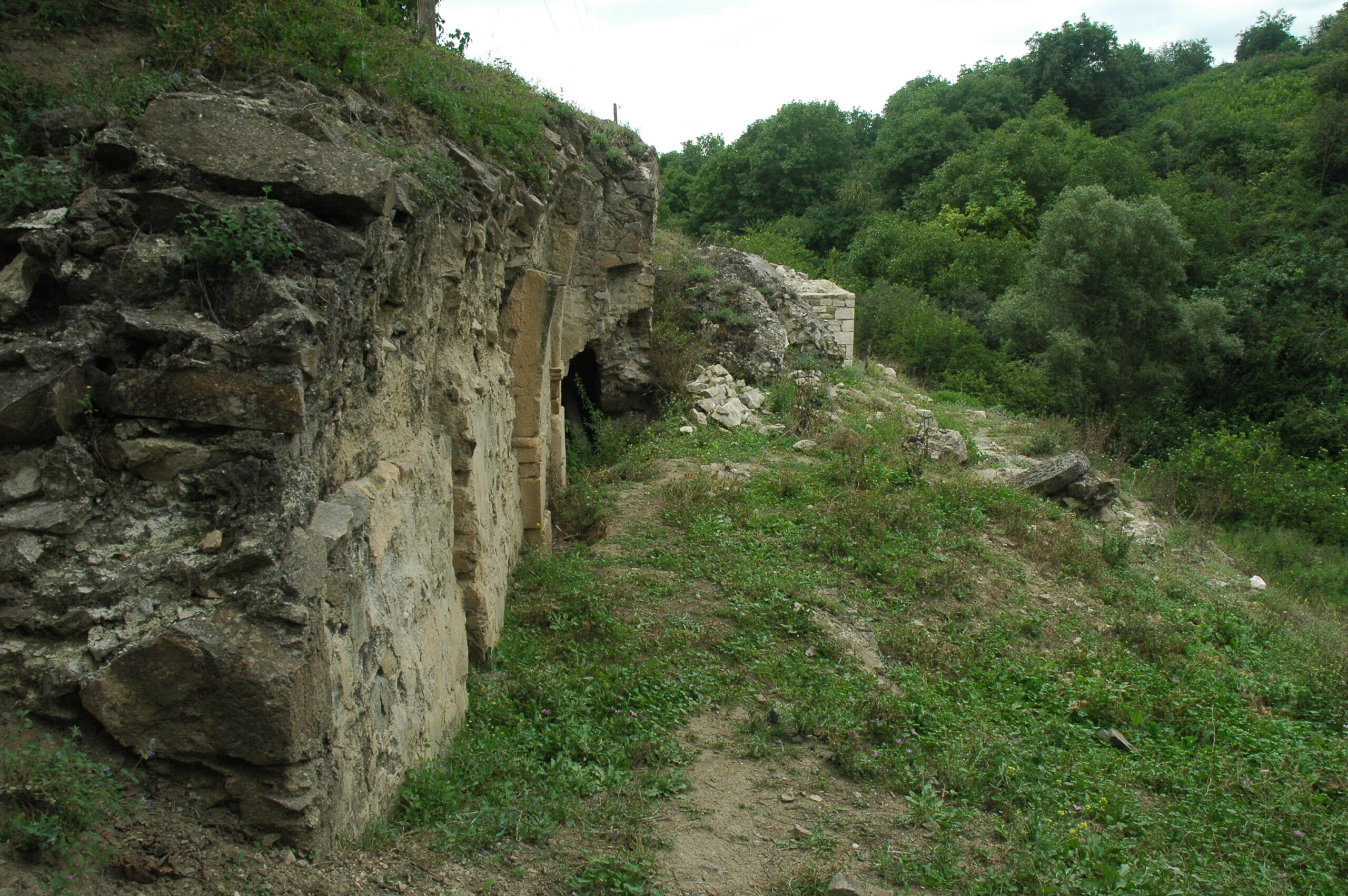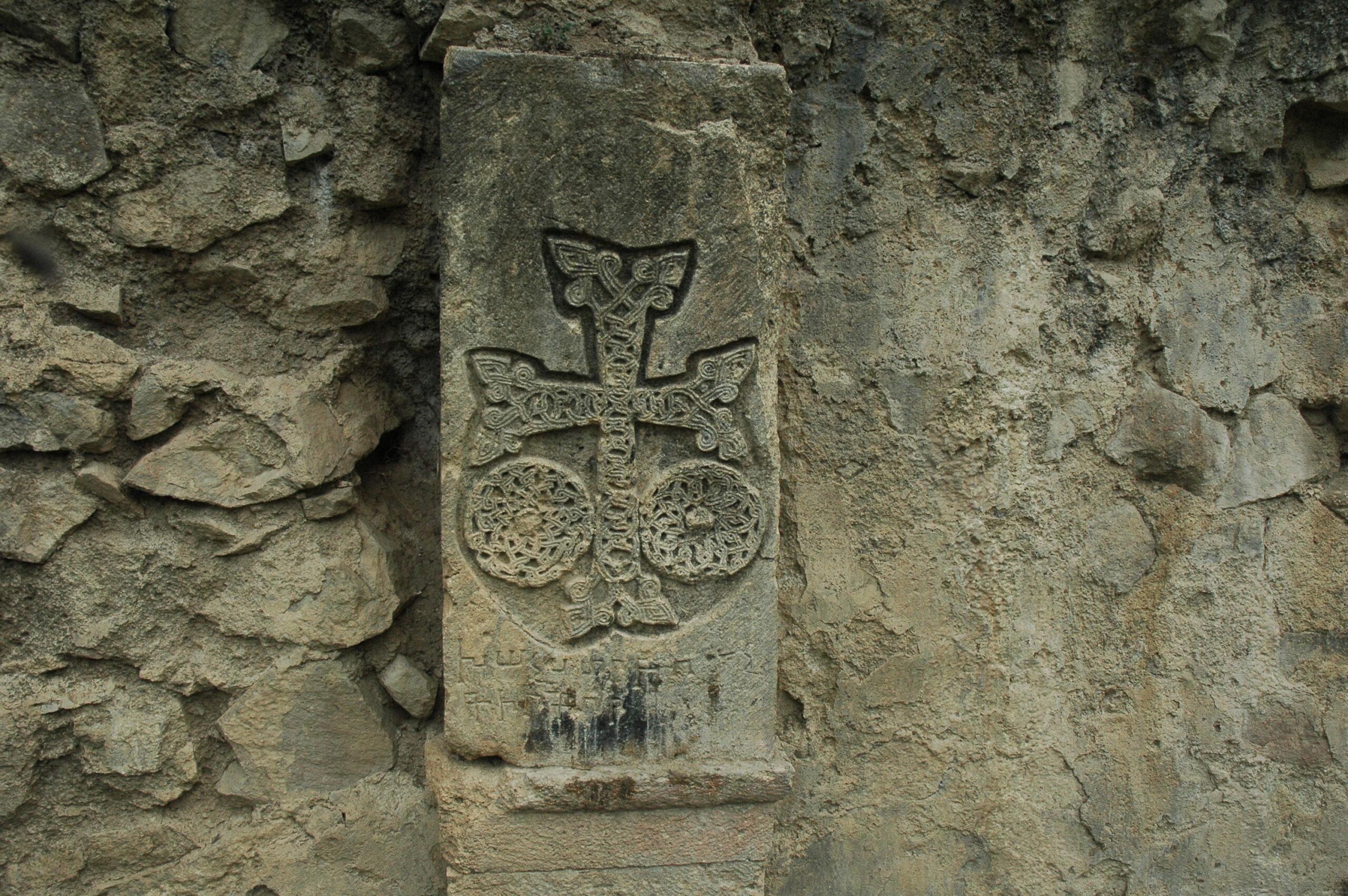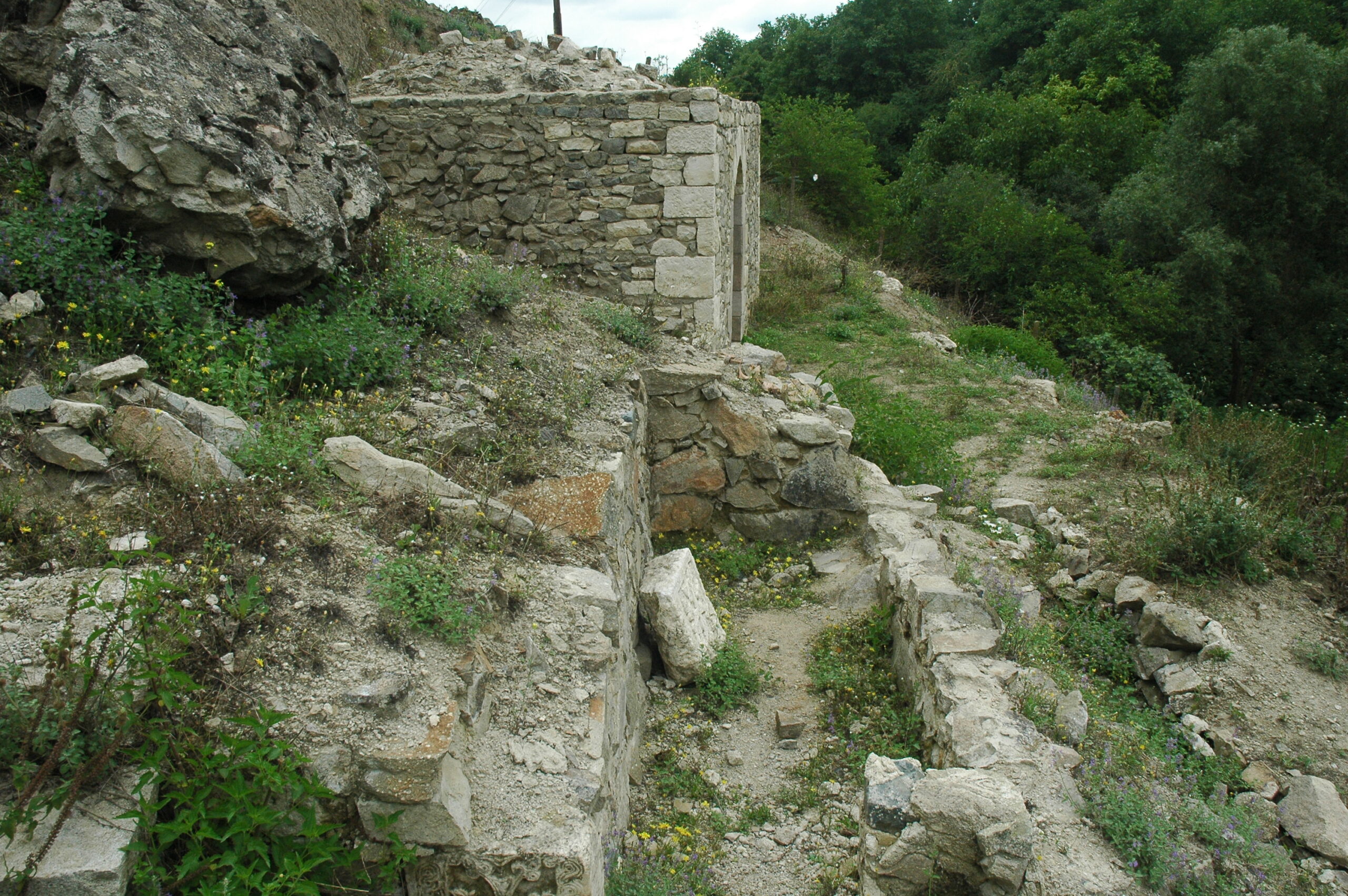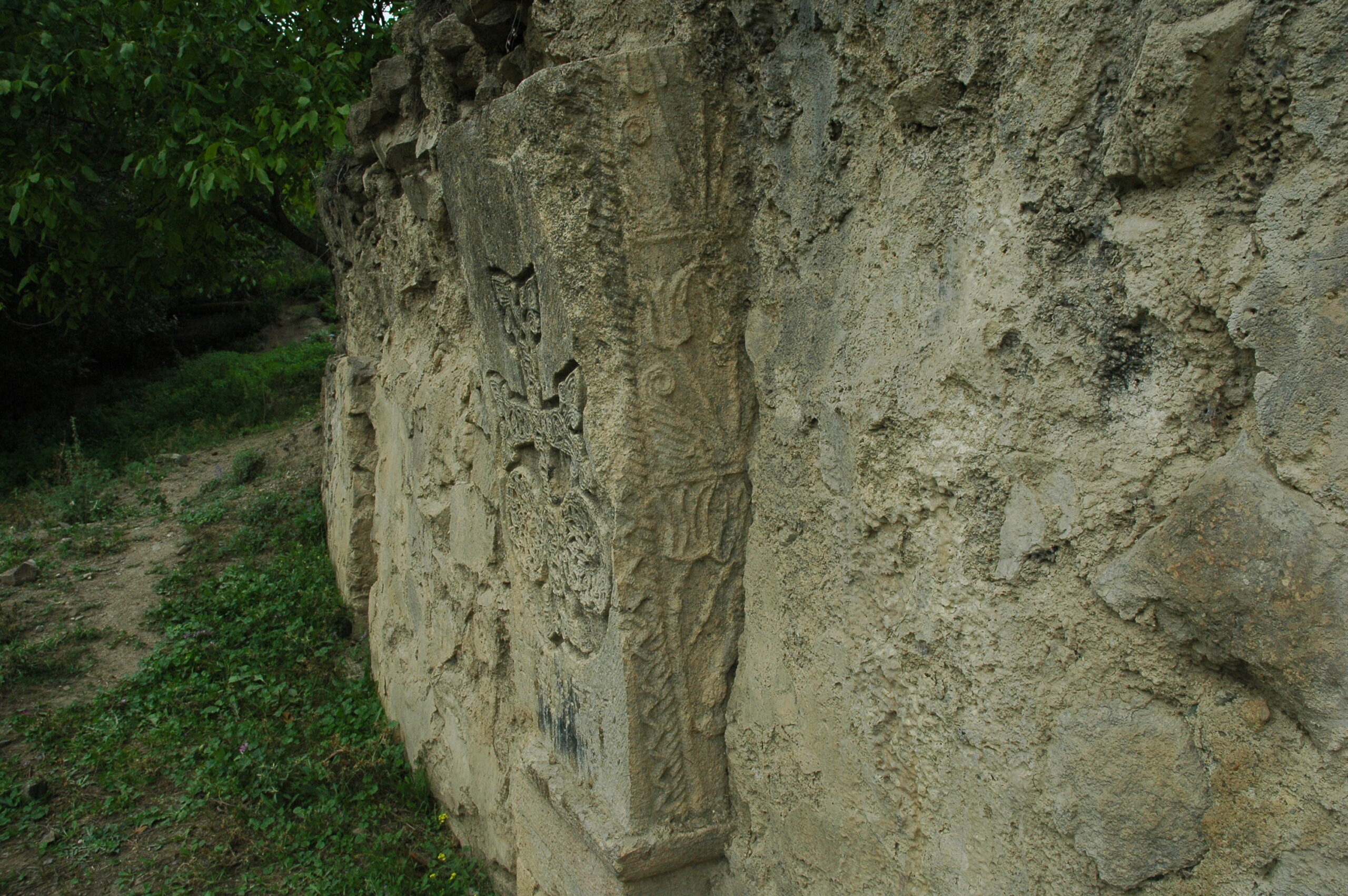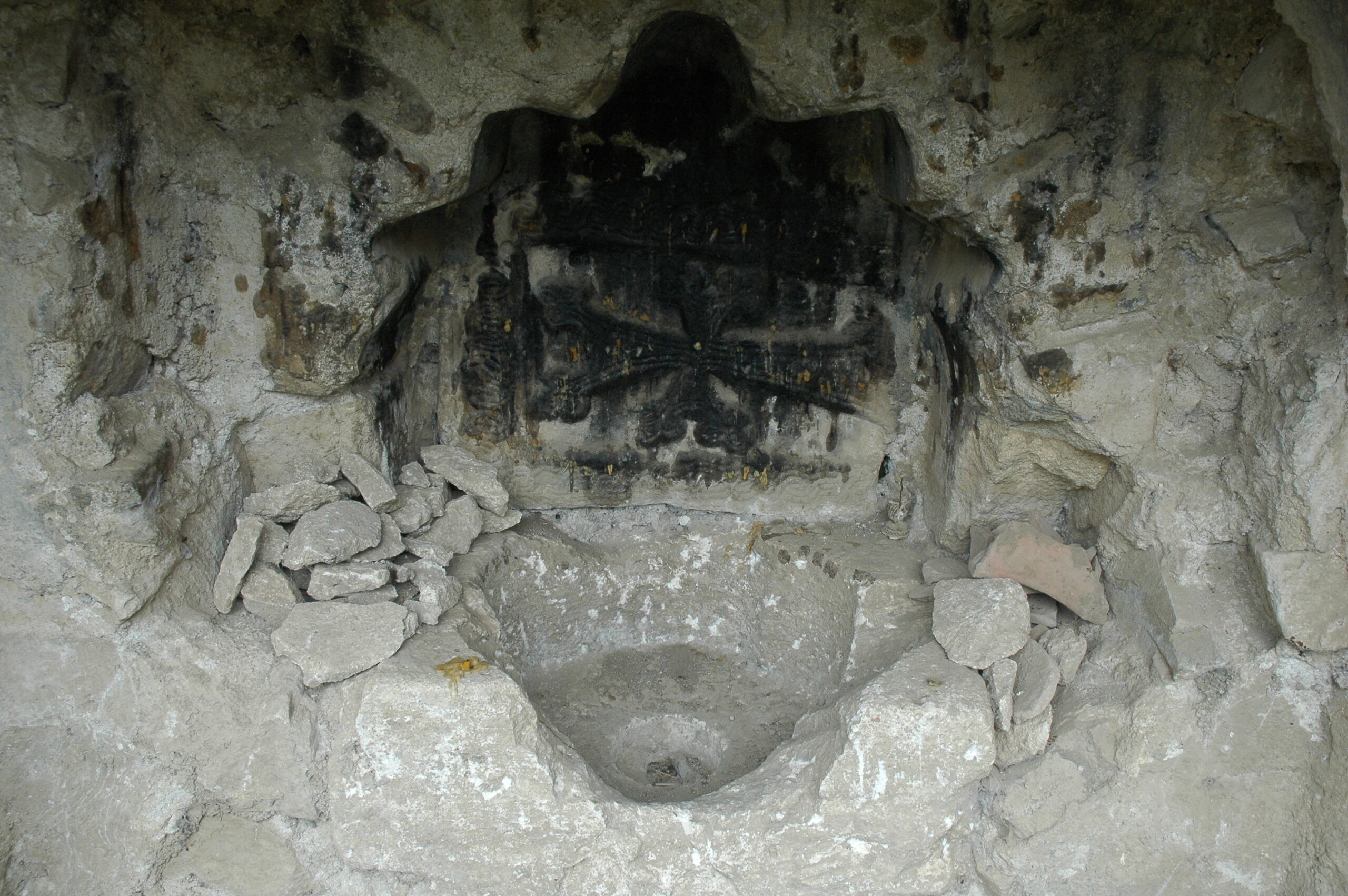The Surb Gevorg Church of Chankatagh
Location
The church is situated in the northern part of Chankatagh village in the Martakert region (Fig. 1).
Historical overview
The church was built in the 17th century, as indicated by the brief inscription on the lintel stone above the door. "(1609) This is in memory of Grigor, son of Ghukas" (CAE 5, 94). The church was documented and the inscription was published by Makar Barkhudaryants. The inscription cited by Barkhudaryants is taken from the Corpus of Armenian Lithography.
Speaking about the church, Barkhudaryants describes it as follows: "...the church of Surb Gevorg, an old structure, built on three arches, with a length of 17 meters and 17 centimeters, and a width of 8 meters and 82 centimeters..." (Barkhutareants 1895, 215).
Most of the church was destroyed during the Soviet years, leaving only the northern wall and some sections intact (Figs. 2-4). Noteworthy is the inscribed stone with a cross set into the wall (Fig. 5). This stone serves as the foundational cornerstone of the vault. On one of its side facades, there is an image of a lily flower (Fig. 6), and on the other, clusters of grapes (Fig. 7). Based on the iconography, this stone appears to be part of an early medieval monument that was repurposed in the 17th century. It was transformed into a cornerstone, carved with a cross, and inscribed with a two-line memorial: "This Cross to the soul of Grigor."
The inscription of the church's construction, which Makar Barkhudaryants referenced, has disappeared, possibly destroyed due to an explosion. The Surb Gevorg Church was restored in 2018 by architect Valery Hayrapetyan, with funding provided by Eduard Sargsyan from Chankatagh. During the restoration works, the remaining stones from the old church, along with many khachkars found in the area, were utilized(https://www.youtube.com/watch?v=MQBt5gvvbF8). During the restoration of the church, a new lintel was installed with an inscription commemorating the restoration: "In the Patriarchate of His Holiness Garegin II and Archbishop Ter Pargev, Surb Gevorg Church was rebuilt at the expense of Ter Eduard Sargsyan in the year 2018."
Architectural-compositional examination
The restored church is a single-nave vaulted hall with a rectangular layout, similar to many churches in the rural settlements of Artsakh (Fig. 8). The nave is supported by arrow-shaped arches rising from pillars. Surb Gevorg is constructed with local, semi-finished small and medium-sized stones; only the cornerstones of the walls, window frames, and entrance borders are polished, and made from white limestone. The church features two sacristies. The roof is tiled, with a small bell tower made of white limestone (Fig. 9). In the church's baptismal font, there is a khachkar positioned at an incline (Fig. 10).
There are small donation khachkars encased on the western wall of the church ( Fig. 11). The khachkars from the 10th-13th centuries are mounted on the wall of the western facade, and in front of the entrance, there are tombstones from the 17th-19th centuries (Figs. 12-13).
The condition before and after the war
The church remained unaffected during the 44-day war in 2020. However, following the complete occupation of Artsakh in September 2023, the church's fate is now uncertain.
Bibliography
- Barkhutareants 1895 - Barkhutareants M., Artsakh, Baku.
- CAE 5 - Corpus of Armenian Epigraphy, issue 5, Artsakh/ made by S. Barkhudaryan, Yerevan, 1982.
- Opening and Consecration Ceremony of Surb Gevorg Church in Chankatagh, https://www.youtube.com/watch?v=MQBt5gvvbF8.
The Surb Gevorg Church of Chankatagh
Artsakh
